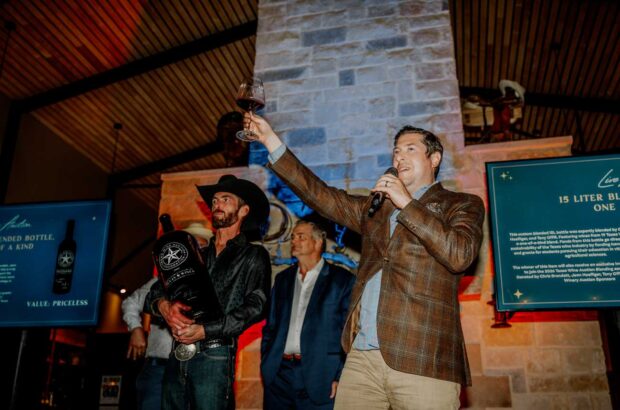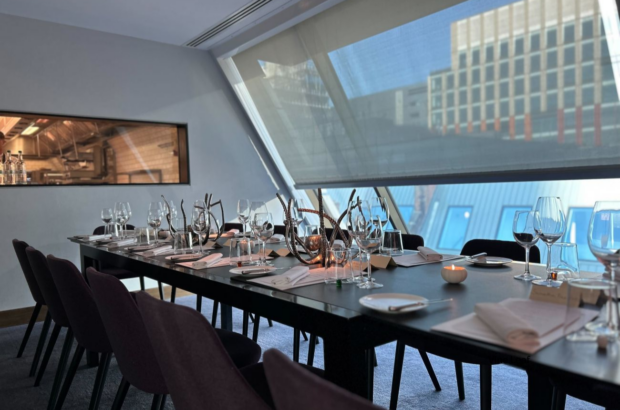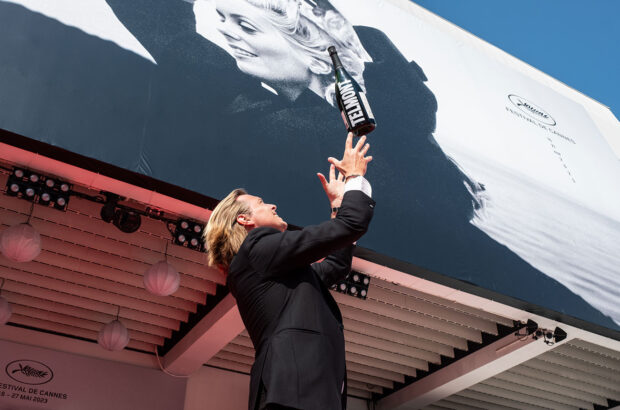Kentucky and Tennessee may be home to American whiskey, but there is no rule saying that these are the only areas allowed to produce this popular spirit.
Regulations from The Alcohol and Tobacco Tax and Trade Bureau (TTB) state that to qualify as a bourbon, a spirit has to be made in the US, have a mash bill of at least 51% corn, be bottled at 80 proof (40% abv) or higher and be aged in a new American white oak barrels.

American white oak bourbon barrels at St Augustine Distillery, Florida Credit: Jim West / Alamy Stock Photo
Bourbon cannot be distilled at more than 160 proof (80% abv) nor barreled at more than 125 proof (62.5% abv).
American whiskeys that are made outside Kentucky and Tennessee have similar characteristics that bourbon drinkers can appreciate: the sweet and smooth taste with heavy notes of vanilla and oak. But different approaches and varied climates help to signify where they come from.
Every place tells a story
Climate and fluctuating temperatures impact how the oak influences whiskey. For example, Blackland Distillery in Fort Worth, Texas grapples with intense summer heat. This makes it a challenge not to over-age its bourbons – but is worth it in taste.

Blackland Distillery in Fort Worth, Texas
‘The high heat helps give those oak flavours extracted from the wood,’ says Kelly Middleton, Blackland’s bar and tasting room manager. ‘Everything is bigger in Texas, including toasty, smoky, bold body and finish of bourbons.’
High desert conditions in Nevada influence the grains that Minden Mill Distilling uses to make its bourbon, giving it a fresh, original flavour. ‘The whiskey has a unique, savoury flavour profile,’ says Joe O’Sullivan, Master Distiller at Milden Mill. ‘It’s much different than the sweetness typically associated with traditional bourbons from Kentucky.’
Home-grown flavours

Heirloom corn variety used at Minden Mill Distilling
The variable mash bill used to make bourbons will also differ within each state. Many smaller distilleries turn to local farmers to source their grains for a range of flavours reminiscent of the area.
Wyoming Whiskey, located in the small town of Kirby, works with local farmers to select strains of non-GMO corn, winter wheat, barley, and winter rye. ‘The farmers cultivate a corn strain that matures in 91 days,’ says Brendan Cook, Master Blender at Wyoming Whiskey. ‘It’s ideal for Wyoming’s high elevation and short growing season.’
Widow Jane, an urban distillery in Brooklyn, New York, also values its in-state resources. ‘We have worked with upstate farmers to develop our own corn varietal that’s featured in our Baby Jane Bourbon, providing us with a distinctly flavourful corn to work with,’ says Sienna Jevremov, head distiller and blender at Widow Jane. ‘All our whiskey is proofed with a mineral-rich water that we source from the old Rosendale mines in upstate New York, about 160km north of the distillery.’

Widow Jane Distillery in Brooklyn
Housed in Florida’s oldest ice plant, St Augustine Distillery uses local corn and wheat to create its Florida Straight Bourbon, with minimal filtration for its signature smooth and round finish.
Meanwhile Iowa’s first licensed distillery, Cedar Ridge, makes its bourbon using only 100% Iowa corn and fermenting off-grain. Murphy Quint, director of operations and Master Distiller, explains: ‘Fermenting off-grain is very common in single malt production. Not so much in bourbon, so it gives us a cleaner distillate and a very approachable whiskey.’
It’s all in the making
While individual states need to follow the standard requirements for bourbon-making, they can still use various methods to make the result more distinct.
For example Vermont’s WhistlePig has a ‘snout-to-tail’ bourbon process featuring two toasted barrel heads. ‘The “snout” end has a Vermont oak medium toast and the “tail” end has a Vermont oak smoked maple wood toast,’ says Meghan Ireland, chief blender at WhistlePig. ‘The barrel is flipped 180 degrees during the final stage of maturation, with each barrel head’s unique toasted flavours added to a whiskey that’s already rich with a decade of age.’
North Carolina’s first farm distillery since prohibition, Broadslab Distillery, has a ‘flue-cured’ ageing process; the term refers to a type of curing barn used to dry tobacco leaves. Master Distiller Jeremy Norris explains that this helps to honour the area’s ‘rich history of tobacco farming and whiskey production’. The bourbon is placed in American white oak barrels and stored in the rickhouse on the farm before being moved to a neighbouring tobacco barn during the harvest season, utilising the intense heat to accelerate the ageing process.

Master Distiller Nathan Perry of J Rieger & Co
Rather than opting for continuous column distillation, J Rieger & Co in Kansas City prefers a combination of column and pot stills. ‘We use our column still as essentially a stripping run,’ says Master Distiller Nathan Perry. ‘Then instead of running that through a doubler as is the industry standard, we collect it all and run a separate pot distillation. This allows us the control we loved about pot distillation, while adding volume associated with continuous distillation.’
New age of bourbon
Kentucky and Tennessee will always be a pillar of American whiskey. Nonetheless other states dedicated to the craft have much to offer bourbon drinkers everywhere.
‘Consumers should be adventurous and explore new flavours from distilleries in the West, South, or even their local area,’ advises O’Sullivan of Milden Mill. ‘It’s a great time to discover the future of bourbon.’

An Old Fashioned from Ice Plant in St Augustine
American bourbons: six to try
Baby Jane Bourbon
Made by Widow Jane Distillery, with unique heirloom corn and proofed with mineral water sourced from local mines. Creamy aromas of honeycomb and toffee, with a taste of fig and caramel rounding off, plus hints of stone fruit and chocolate. An ideal option for a Paper Plane. $59.99/75cl, Seelbachs. Alcohol 45.5%
Broadslab Flue-Cured Single Barrel Bourbon
Made with farm-grown grains cultivated at Broadslab Distillery with a unique ‘flue-cured’ ageing process that sees a second period of ageing in a tobacco curing barn. Notes of dark chocolate and tobacco guide to tastes of oak and coffee that finish with a touch of oak. A fine selection for a Boulevardier. $64.95/75cl, Broadslab Distillery. Alc 46.5%
Cedar Ridge Double Barrel Bourbon
Made with Iowa-grown corn, Cedar Ridge’s Straight Bourbon Whiskey is finished in a second new American oak cask after ageing to produce this double-barrel expression. Aromas of apricot and caramel are followed by cinnamon and oak with a smooth finish. Well-suited for a Highball. $49.99/75cl, Big Thirst. Alc 52.50%
St Augustine Distillery Florida Straight Bourbon
Made with Florida-grown corn and wheat, St Augustine Distillery employs as little filtration as possible. Warm aromas of vanilla and leather lead a palate of tobacco and baking spices, with a lingering finish. A worthy choice for an Old Fashioned. $50/75cl, Big Thirst. Alc 44%
Minden Mill Nevada Straight Bourbon Whiskey
Made with earth tone heirloom corn and aged for four years in new charred American and French oak. Toasted oak and vanilla hits the nose, with molasses and spice on the tongue, plus a sweet finish. A perfect pick for a Manhattan. $44.99/75cl, Minden Mill Distilling. Alc 47%
Wyoming Whiskey Small Batch Bourbon Whiskey
Made with non-GMO corn at Wyoming Whiskey, using pure local limestone water during production stages. Light on the nose with floral hints combined with vanilla bean and a mouthful of brown butter that rounds out with a finish full of spice thick on the tongue. Try it in a well-made Sour. $43.99/75cl, Caskers. Alc 44%







